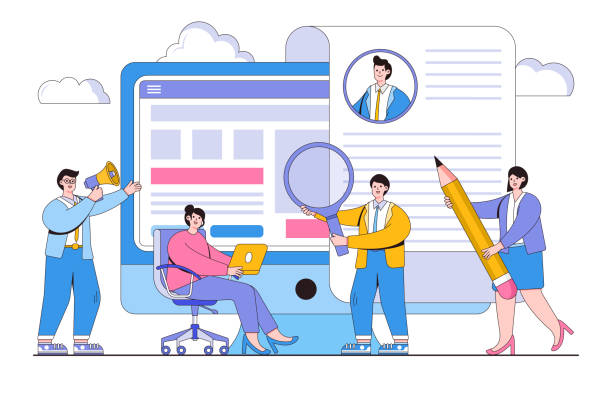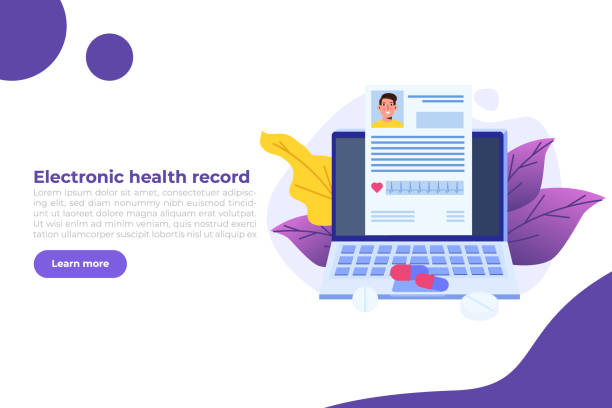Introduction to the Importance of Fast Website Design
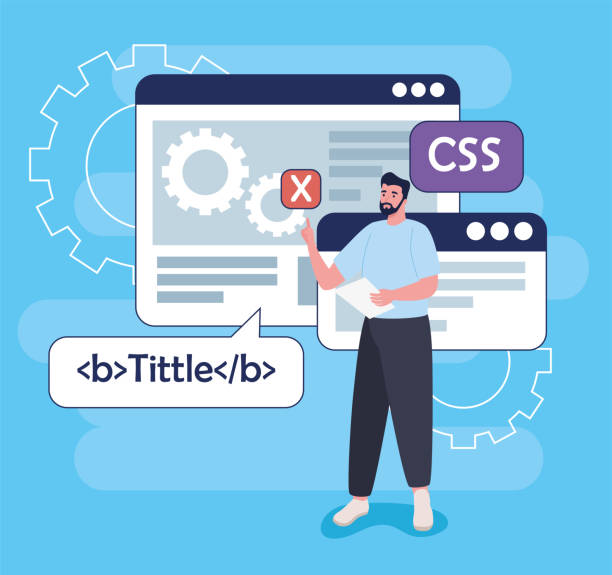
In today’s fast-paced world, website loading speed is not just a competitive advantage, but a critical necessity.
Users expect web pages to load in fractions of a second, and any delay can mean losing visitors.
#Fast_Website_Design is no longer a luxury choice, but a foundation for the success of any online business.
This topic not only directly impacts user experience (UX), but is also an important factor in search engine ranking (SEO).
This chapter explains why speed is extremely important for websites and shows how a slow website can harm a brand’s reputation and a company’s revenue.
From a user’s perspective, speed equals efficiency and satisfaction.
A fast-loading website allows users to access the information they need without interruption, which in turn increases engagement and reduces bounce rate.
The importance of improving website performance is even more critical in e-commerce; where every second of delay can lead to significant lost sales.
Studies have shown that even milliseconds of delay can negatively impact conversion rates.
Therefore, investing in fast website design is a smart and strategic decision for any online entity.
Are you tired of your company’s website not meeting your expectations? Design a professional website with Rasawb that truly represents your business.
✅ Increase attraction of new customers and sales leads
✅ Increase your brand’s credibility and trust among your audience
⚡ Get a free website design consultation!
Key Factors Affecting Website Loading Speed
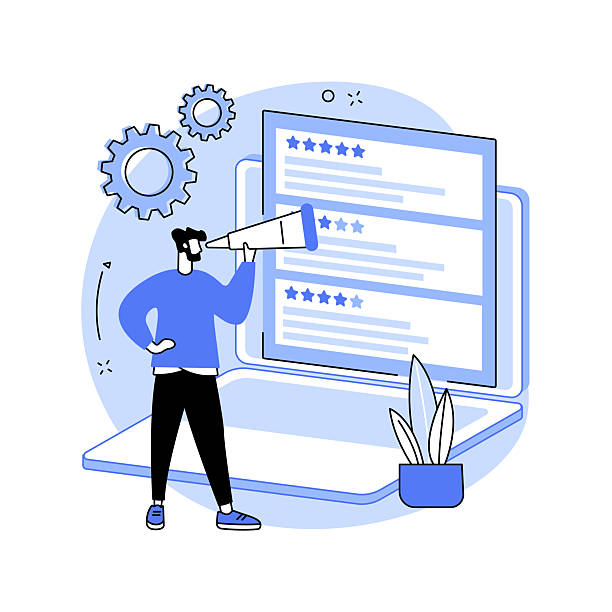
Identifying and understanding the factors that affect website loading speed is the first step in achieving fast website design.
This chapter analytically examines various aspects that can reduce or increase your site’s speed.
Among the most important factors are the size of images and multimedia files, unoptimized CSS and JavaScript codes, inappropriate hosting choices, and lack of caching.
Heavy content, especially high-quality and uncompressed images and videos, can put a heavy load on the server and user bandwidth.
Similarly, a high number of HTTP requests and the use of multiple web fonts can significantly increase loading time.
Not utilizing Content Delivery Networks (CDNs) to deliver content from the closest server to the user is another factor that can reduce speed, especially for international users.
Understanding these factors helps you develop a comprehensive strategy for optimizing your site’s speed.
This specialized knowledge is essential for every developer and web business owner to identify and resolve their website’s performance bottlenecks and move towards an efficient and fast website design.
Also, the choice of frameworks and content management systems (CMS) can affect speed.
Website Speed Optimization Techniques and Tools

To achieve fast website design, a set of specific techniques and tools must be used.
This section guides and specializes in introducing these solutions.
Image compression is one of the simplest and most effective methods; using modern formats like WebP can reduce file sizes without significant quality loss.
Enabling browser and server caching allows users to load content from their local memory on subsequent visits, which dramatically increases speed.
Minification of CSS, JavaScript, and HTML codes by removing whitespace and extra characters reduces file sizes.
Using a CDN (Content Delivery Network) to distribute content from servers closer to users improves response time.
Also, upgrading hosting and using high-performance servers with proper HTTP/2 and Gzip Compression configuration is very important.
Fast website design requires attention to technical details.
Below is a table of the most important website speed optimization tools and techniques:
| Optimization Technique | Description | Suggested Tools |
|---|---|---|
| Image Optimization | Reducing image size without significant quality loss using appropriate formats. | TinyPNG, ImageOptim, Squoosh |
| Caching | Temporary storage of site content for faster loading on subsequent visits. | WP Super Cache, W3 Total Cache, Redis, Varnish |
| Code Minification | Removing unnecessary characters (like whitespace and comments) from codes. | UglifyJS, CSSNano, HTMLMinifier |
| Using CDN | Delivering content from servers closer to the user to reduce latency. | Cloudflare, Akamai, Amazon CloudFront |
| Server and Hosting Optimization | Choosing appropriate hosting and using modern protocols like HTTP/2. | SiteGround, Kinsta, WP Engine |
Implementing these techniques requires technical knowledge, but the results in user experience and fast website design will be outstanding.
Impact of Site Speed on User Experience and SEO
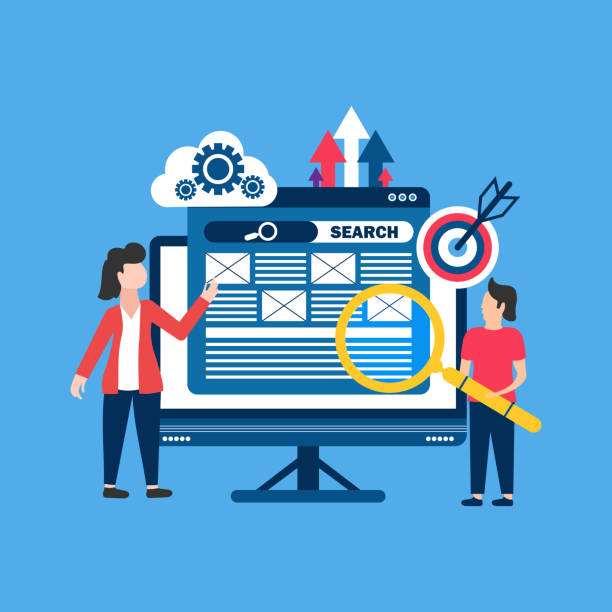
Website speed has a close relationship with user experience (UX) and search engine optimization (SEO).
This chapter analytically examines these connections.
Fast website design directly affects user satisfaction; the faster the site loads, the less users wait, and the more likely they are to stay on the site and interact.
This leads to a reduction in Bounce Rate and an increase in dwell time on the site, both of which are positive signals for search engines like Google.
Google has explicitly stated that page loading speed is a ranking factor, especially for mobile searches.
Slow websites may appear lower in search results, even if they have excellent content.
This is a questionable content: can one achieve high rankings without considering speed? The answer is no.
Furthermore, speed also affects website crawling by search engine robots; slower sites may be visited less frequently by robots.
Therefore, investing in fast web page loading not only improves customer experience but also significantly increases your chances of being seen in search engines.
This shows that fast website design is a comprehensive strategy covering both technical and marketing aspects, and is essential for online success.
Tired of your company’s website not getting the visibility it deserves and losing potential customers? Solve this problem forever with professional and effective website design by Rasawb!
✅ Increase brand credibility and gain customer trust
✅ Attract targeted sales leads
⚡ Contact us now for a free consultation!
Mobile-First Approach and Speed in Web Design
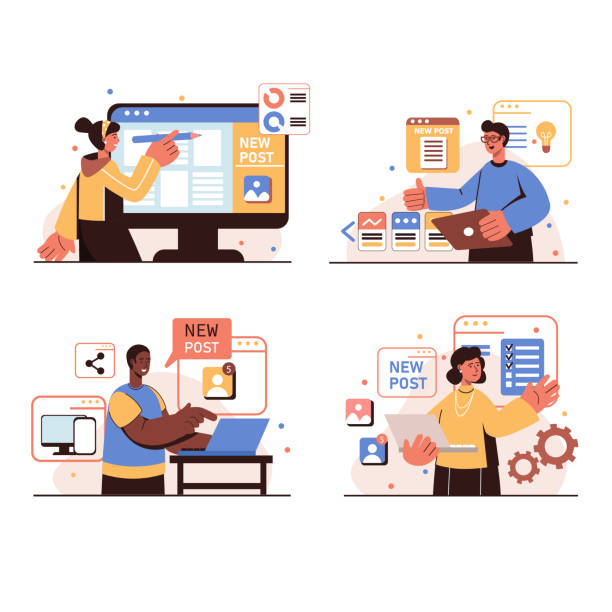
With the increasing use of mobile devices for internet access, the “Mobile-First” approach has become a standard in fast website design.
This chapter explains and specializes in the importance of this approach for achieving high speed.
Google has also prioritized the mobile version of websites for indexing and ranking.
Therefore, if your website is slow on mobile, you will likely suffer in search rankings.
Fast website design for mobile means optimizing images for smaller screens, using Responsive Design, and ensuring smooth script performance in low-speed network environments.
Mobile user experience is much more sensitive; mobile users are often on the go and need information quickly.
Any small delay can cause them to leave the site.
To achieve fast web page loading on mobile, special attention must be paid to fonts, CSS and JavaScript files, and the DOM structure.
Often, starting the design from scratch for mobile and then scaling it for desktop helps achieve better results in terms of speed.
This approach not only helps with loading speed but also ensures that your site is optimized for a wide range of devices and network conditions, providing a seamless user experience.
Common Web Design Mistakes That Lead to Slowness

On the path to achieving fast website design, there are some common mistakes that can negate your efforts.
This chapter educates on these mistakes and ways to prevent them.
One of the biggest errors is using high-volume images without proper compression.
Many web designers overlook the importance of image optimization, while this factor can account for up to 70% of a page’s loading time.
Another is excessive loading of JavaScript and CSS that are render-blocking; these scripts prevent content from displaying until they are fully loaded.
Not using caching, both server-side and browser-side, is another mistake that forces the user to load the entire page every time.
Choosing cheap and low-quality hosting can also mean slow servers and high response times, which severely affects site loading speed.
Installing too many unnecessary plugins and add-ons, especially in content management systems like WordPress, can create additional codes and HTTP requests.
Neglecting mobile optimization and not paying attention to responsive performance are also glaring mistakes.
To achieve fast and efficient website design, it is necessary to identify and avoid these common mistakes.
Proper implementation of optimization techniques requires a systematic approach and attention to detail.
Success Stories and the Impact of Fast Website Design
![]()
Many leading companies worldwide have understood the importance of fast website design and have achieved significant results by investing in this area.
This chapter reports and entertains with some of these success stories.
For example, Amazon has repeatedly stated that every 100 milliseconds of delay in page loading can lead to a 1% decrease in sales.
This figure for a company with Amazon’s workload, means billions of dollars a year! This fact shows that site speed optimization is a very high-return investment.
In another example, a news website with fast website design was able to reduce its bounce rate by 20% and increase user dwell time by an average of 30 seconds, which led to a significant increase in advertising revenue.
Google itself is a pioneer in speed and has provided tools like PageSpeed Insights to help developers.
Below is a table of the tangible benefits of fast web page loading for various businesses:
| Positive Aspect | Business Impact | Example/Indicator |
|---|---|---|
| Improved User Experience (UX) | Increased user satisfaction and customer loyalty. | Reduced Bounce Rate |
| Increased SEO Ranking | More visibility in search results and attracting organic traffic. | Highest position in Google PageRank |
| Improved Conversion Rate | Increased sales and revenue for e-commerce websites. | Increased Click-Through Rate (CTR) on products |
| Reduced Server Costs | Optimization of server resources and reduced bandwidth consumption. | Reduced number of requests to the server |
| Better Mobile Accessibility | Smoother experience for mobile users and increased access. | Mobile Core Web Vitals score |
These examples clearly demonstrate why fast website design is of high importance and how it can act as a powerful lever for growth and success.
The Future of Web Speed and New Technologies

The future of fast website design relies on technological advancements and the emergence of new web standards.
This chapter analytically addresses these trends and new technologies.
Service Workers and Progressive Web Apps (PWAs) are among the most important innovations that enable offline loading and an app-like user experience, significantly impacting web page loading speed.
Also, the evolution of the HTTP/3 protocol based on QUIC promises higher speeds and greater security, especially in high-latency networks.
The use of Lazy Loading for images and videos, which loads content only when it is in the user’s viewport, has become standard.
New compression technologies like Brotli also help reduce file sizes.
Artificial intelligence and machine learning can also be used in the future to automatically optimize websites and predict loading needs.
Ultimately, fast website design will increasingly move towards micro-frontend and API-first architectures to provide greater scalability and flexibility.
These trends show that the path to speed optimization is an endless journey that opens new horizons with every new innovation.
Tired of your company’s website not getting the visibility it deserves and losing potential customers? Solve this problem forever with professional and effective website design by Rasawb!
✅ Increase brand credibility and gain customer trust
✅ Attract targeted sales leads
⚡ Contact us now for a free consultation!
Measuring and Monitoring Website Speed Performance
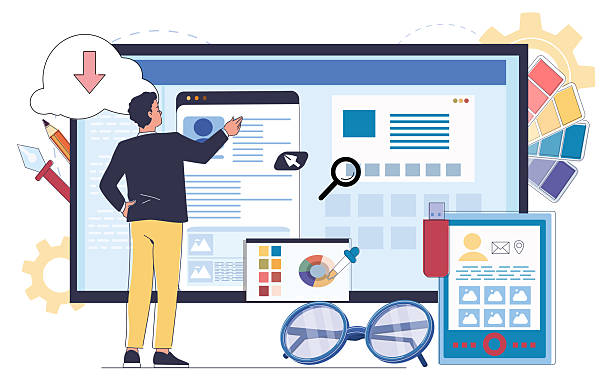
After implementing fast website design techniques, the next step is continuous measurement and monitoring of speed performance.
This chapter guides on key tools and metrics for this purpose.
Tools like Google PageSpeed Insights, Lighthouse, GTmetrix, and WebPageTest allow for in-depth analysis of loading speed and provide optimization suggestions.
These tools evaluate important metrics such as Largest Contentful Paint (LCP), Cumulative Layout Shift (CLS), and First Input Delay (FID), which are part of Google’s Core Web Vitals.
LCP shows the loading time of the largest content element on the page, CLS measures visual stability, and FID assesses the responsiveness of the site to the user’s first interaction.
Continuous monitoring of these metrics helps you quickly identify any speed drops and take necessary actions.
Additionally, analytical tools like Google Analytics can also provide data about your site’s speed.
Fast website design is not a one-time process but requires regular review and optimization to always provide the best user experience.
This specialized and data-driven process ensures that your efforts to improve speed yield tangible results.
The Continuous Importance of Speed Optimization Throughout a Website’s Lifespan
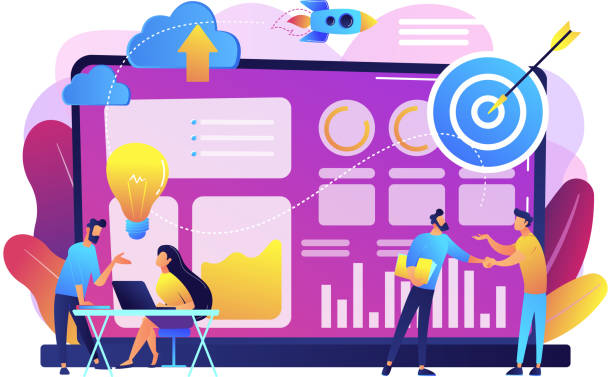
Fast website design is not just about the initial launch of an optimized website; it’s an ongoing commitment to maintaining and improving speed throughout the website’s lifespan.
This chapter explains the importance of dynamism in speed optimization.
Websites are constantly changing; new content is added, plugins are updated, and new technologies emerge.
Each of these changes can affect loading speed.
Therefore, a continuous strategy for site speed optimization is essential.
This includes regular updates to the content management system and plugins, periodic review of custom codes, and continuous re-evaluation of image and media file optimization.
Also, with increasing traffic and expanding operations, there may be a need to upgrade hosting or use more advanced CDNs.
Users’ expectations for web speed are also constantly increasing; what is considered fast today may be slow tomorrow.
Therefore, to maintain a competitive advantage and provide the best user experience, organizations must actively seek new ways to improve their website’s performance.
This approach ensures that your site always remains at its peak performance and maintains a suitable position from the perspective of search engines and users.
In other words, fast website design is a journey, not a destination.
Frequently Asked Questions
| Question | Answer |
|---|---|
| What is fast website design? | A process for building a website that loads quickly and provides a smooth and optimized user experience. |
| Why is site speed important? | Increased user satisfaction, improved search engine ranking (SEO), reduced bounce rate, and increased conversion rate. |
| What factors affect site speed? | Page size, number of HTTP requests, image optimization, JavaScript and CSS codes, server speed, and caching usage. |
| How can site speed be measured? | Using tools like Google PageSpeed Insights, GTmetrix, Pingdom Tools. |
| How can site speed be increased? | Image optimization, file compression (CSS, JS, HTML), browser caching, reducing redirects, choosing appropriate hosting. |
| Does fast website design mean low quality? | No, fast design means designing with a focus on speed and performance optimization, not reducing design or content quality. |
| What is the role of hosting in site speed? | The speed and quality of hosting servers directly affect the site’s response time and thus loading speed. |
| How can images be optimized for speed? | Using appropriate formats (like WebP), compressing images without significant quality loss, specifying definite dimensions for images. |
| Can complex websites also be fast? | Yes, by using appropriate architecture, code optimization, and resource management, even complex sites can have high speed. |
| Is fast website design the same as Agile development? | No, fast website design focuses on the final result (a fast site), while Agile development is a methodology for project management and software development. |
And other services of Rasa Web advertising agency in the field of advertising
Smart Brand Identity: An innovative service to increase customer behavior analysis through the use of real data.
Smart Customer Journey Map: An innovative service to improve SEO ranking through user experience customization.
Smart Website Development: An effective tool for user interaction with the help of user experience customization.
Smart Digital Advertising: A combination of creativity and technology to increase sales through SEO-driven content strategy.
Smart Data Analysis: Professional optimization for digital branding using an SEO-driven content strategy.
And over a hundred other services in the field of internet advertising, advertising consultation, and organizational solutions
Internet Advertising | Advertising Strategy | Advertorial
Resources
The Importance of Site Speed in User Experience and SEO
Challenges of Designing High-Speed Websites in Iran
Comprehensive Guide to Increasing Website Speed
Site Speed, Key to Success in the Digital Age
? For a leap in the digital world and achieving big goals, Rasawb Digital Marketing Agency is with you. If you are looking for professional services including personal website design and innovative marketing strategies, contact us to take your business to the top.
📍 Tehran, Mirdamad Street, next to Bank Markazi, Kazeroon Jonubi Alley, Ramin Alley, No. 6

